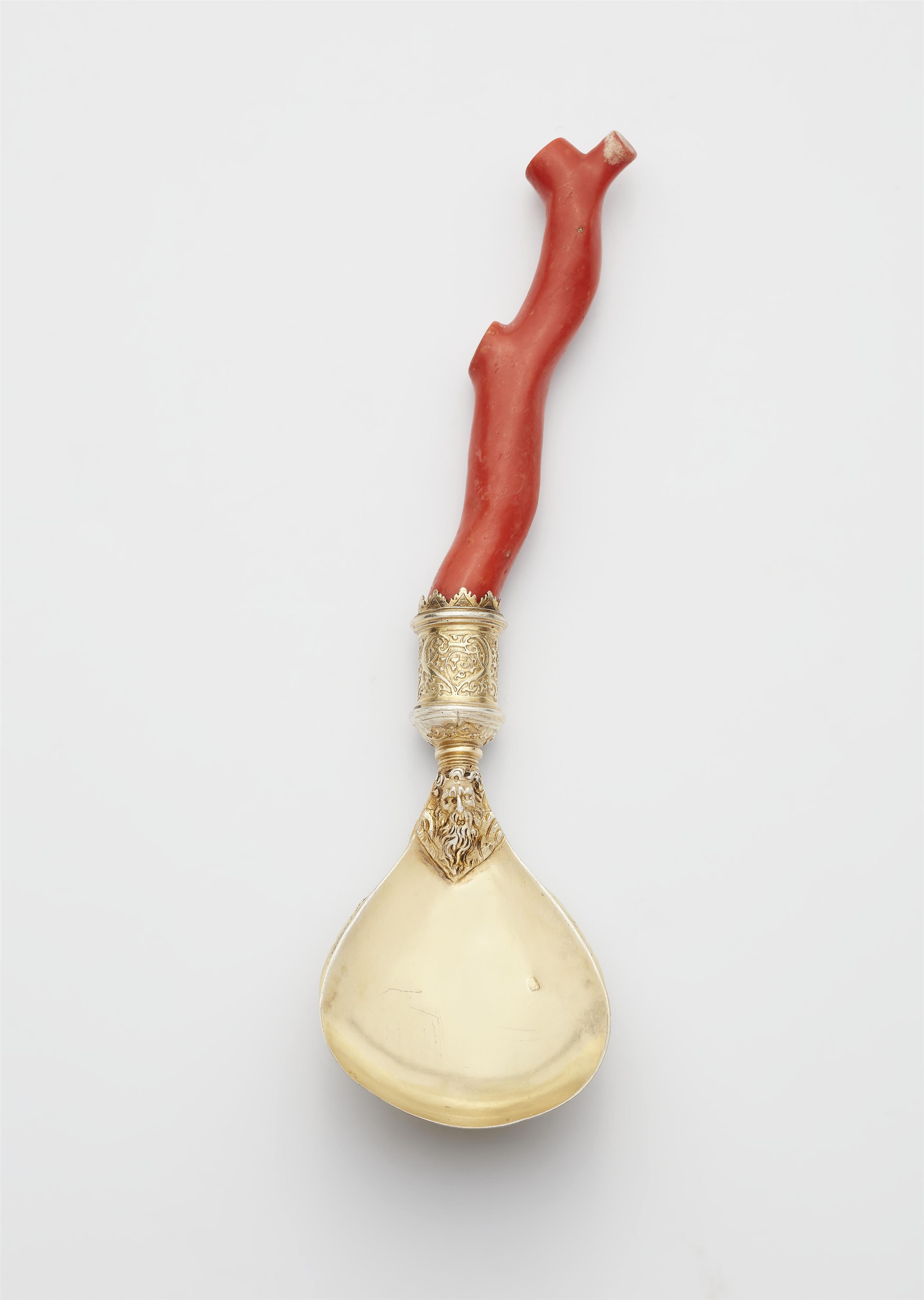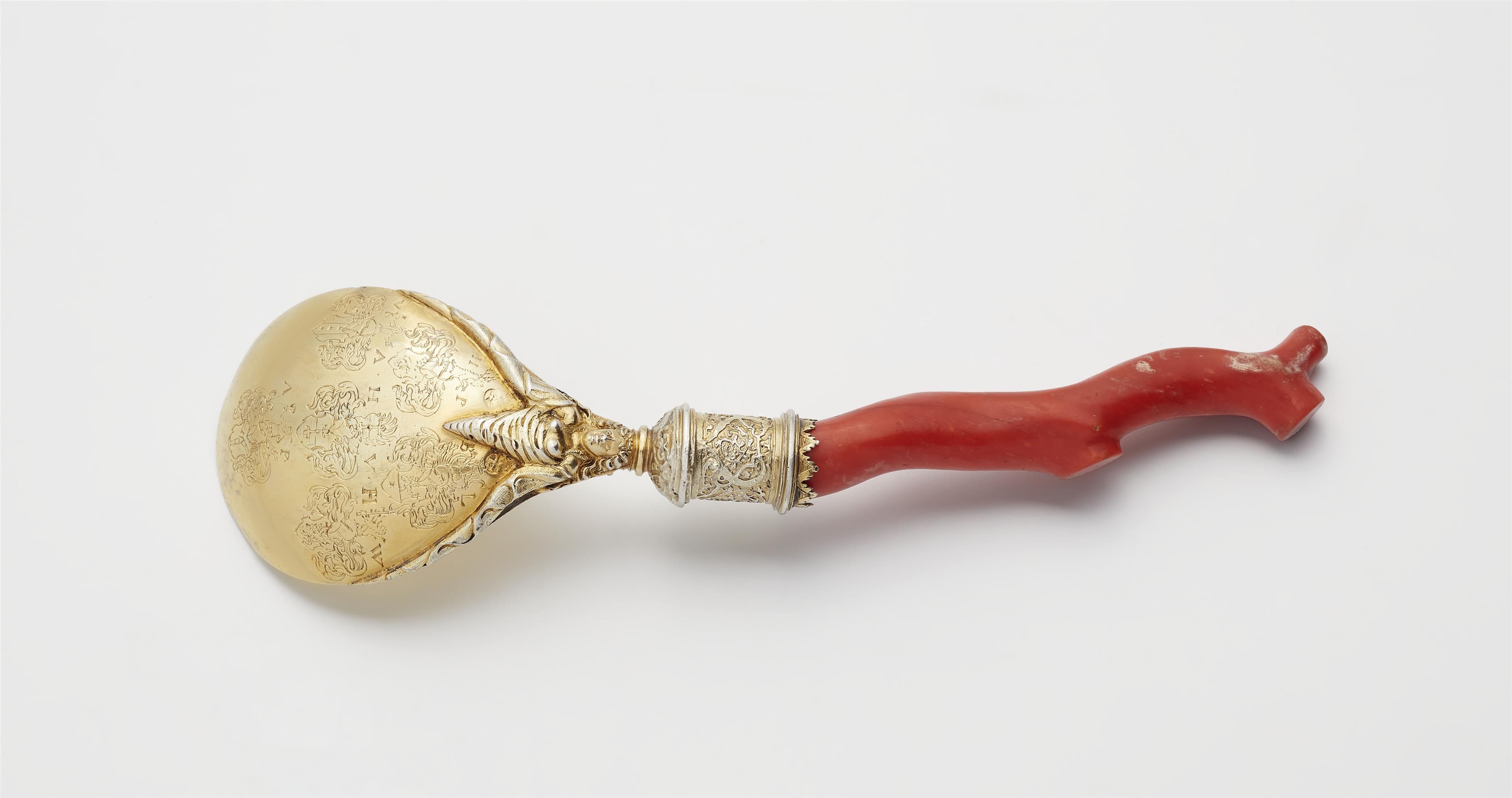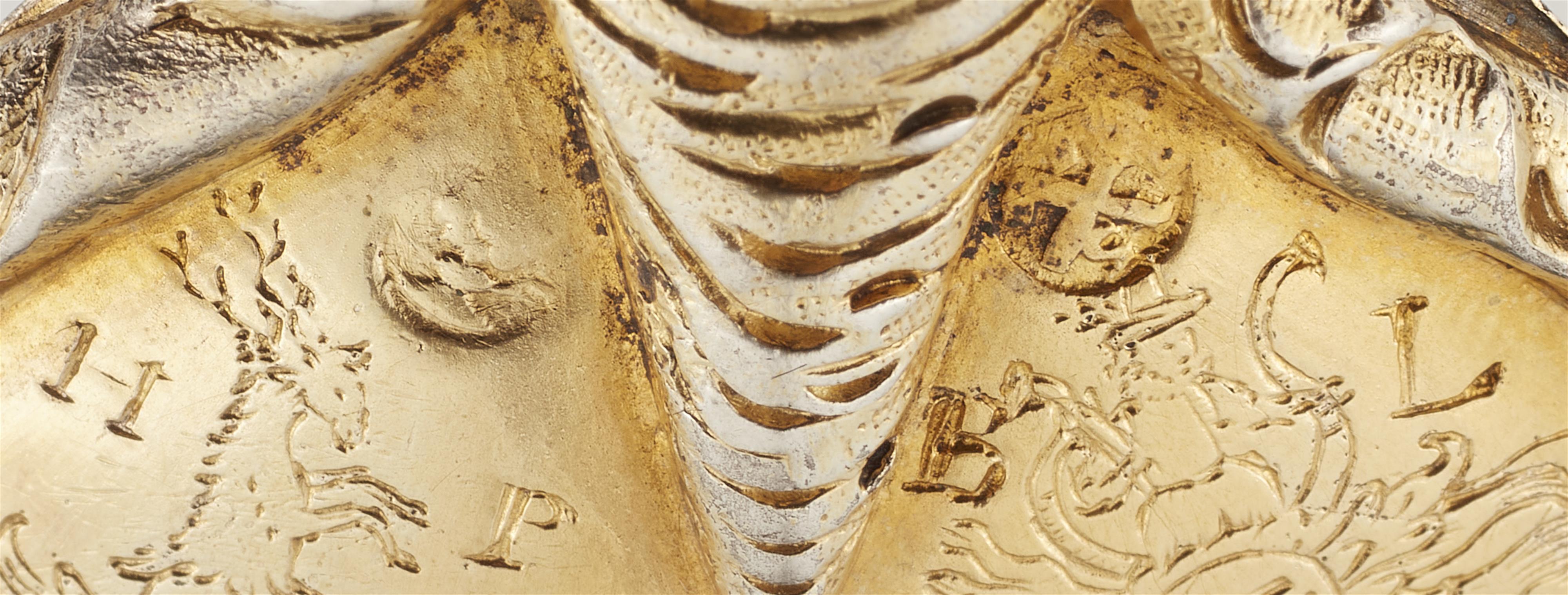An important coral-handled silver gilt renaissance spoon
The terminal with a finely chased portrait of a bearded man avers and a portrait of a lady revers. The cylindrical mountings of the red coral branch with heart-shaped tendrils in relief. The reverse of the spoon bowl engraved with six coats-of-arms and monogrammes. L 18.2 cm, weight 66 g.
Marks of Elias Schweiglin, Augsburg 1565 - 1586.
During the Renaissance, coral was not only valued for its beauty and varied appearance - it was also attributed with a number of protective powers, including the ability to ward off poison and black magic. Coral branches combined with gold and silver were also very popular at the European courts in the 16th century; one of the most extensive collections of coral cutlery was assembled by Elector August of Saxony, who was supplied for example by Genoese merchants around 1580.
Among the coats of arms identified for the present spoon are those of South German goldsmiths' families and merchants.
These include the coat of arms of Bartholomäus Lotter (1531 - 1606, merchant in Augsburg) with the monogram 'BL', and the coat of arms of the Conratter family with the monogram 'VKA' (Bartholomäus Lotter was married to Ursula Conratter from 1591). This is followed by the coat of arms of the Kempten patrician family Vogt von Wierant with the monogram 'HV', the coat of arms of the Walther or Wimphling family with 'HW', the coat of arms of the famous Augsburg plater Anton Peffenhauser (1525 - 1603) with the monogram 'AP' and finally a coat of arms attributed to the Brem/Prem family with the monogram 'HP'.
Provenance
European private collection.
Literature
Cf. a knife in the Solingen Knife Museum ill. in Gertrud Benker, Alte Bestecke, Munich 1978, no. 82. A coral cutlery set in the Staatliche Kunstsammlungen Dresden, illustrated in Jutta Kappel/Ulrike Weinhold, Das Neue Grüne Gewölbe, Dresden 2007, no. 52. Cf. also a coral cutlery set in the collection of the Suermondt-Ludwig-Museum, Aachen, illustrated in Jochen Amme, Historische Bestecke, Aachen 2011, no. 31. Cf. also Georg Laue, Kostbare Bestecke für die Kunstkammern Europas, Munich 2010, p. 72.
For the master, cf. a gilded wedding cup in the parish church at Rengersbrunn, mentioned by Helmut Seling (767 a). The Polish National Museum in Warsaw preserves a Renaissance goblet by Schweiglin made around 1535-1540; inlaid with ancient coins (Inv. No. SZM 3268).






